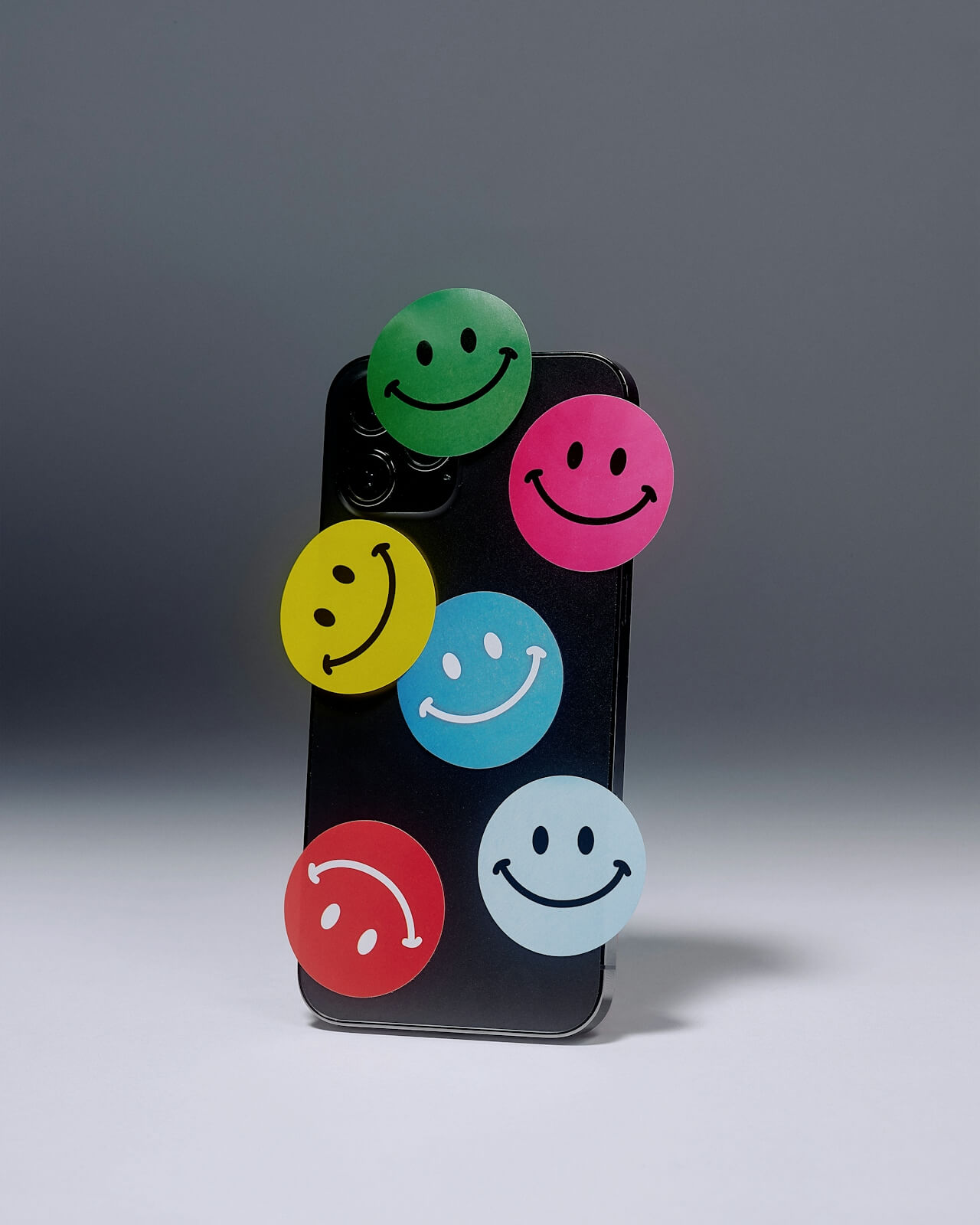Brand identity design encompasses far more than logo creation, yet many business owners conflate the terms assuming they're interchangeable. A brand identity design agency develops comprehensive visual systems that express brand personality, create recognition, and maintain consistency across every touchpoint where customers encounter your company. Understanding what these agencies actually deliver clarifies whether you need their services and what to expect from engagement.
The confusion around brand identity versus simpler design services stems from how these terms get used loosely in marketing. Logo designers create marks. Graphic designers produce individual pieces. Brand identity design agencies build complete visual languages with systematic approaches ensuring coherent brand expression regardless of application. This systematization determines whether brands maintain consistency as usage expands or devolve into visual chaos.
Professional brand identity work solves fundamental business problems about how companies are perceived visually. It establishes recognition, communicates positioning through design choices, creates distinction from competitors, and provides frameworks enabling consistent implementation as organizations grow. These outcomes justify investment when visual coherence significantly impacts business success.
What Comprises Complete Brand Identity Systems
Before evaluating agencies, understanding what complete brand identity systems include helps distinguish comprehensive work from isolated logo design or limited visual development.
Logo design forms the foundation but represents just one component of complete identity systems. Professional logos include primary marks, alternative variations for different contexts, clear space requirements, minimum size specifications, and usage guidelines. The logo system ensures marks work across all necessary applications while maintaining recognition and impact.
Color systems extend beyond single brand colors into comprehensive palettes with primary colors, secondary options, accent colors, and usage principles. Strategic color choices communicate brand personality—warm energetic colors signal different qualities than cool sophisticated palettes. Professional systems specify exact color values across different color models (RGB, CMYK, Pantone) ensuring consistency across digital and print applications.
Typography systems establish how brands use type across all communications. Primary typefaces for headlines, secondary fonts for body copy, size hierarchies, spacing principles, and usage guidelines create typographic consistency. Typography significantly impacts brand perception—geometric sans-serifs communicate differently than traditional serifs or expressive display faces.
Imagery and photography direction defines what kinds of visual content represent brands. Should photography be aspirational or documentary? Colorful or restrained? People-focused or abstract? Illustration versus photography? These decisions ensure visual consistency across marketing materials, websites, advertising, and all brand applications requiring imagery.
Graphic elements and patterns extend visual language beyond logos into supporting design elements. Shapes, patterns, iconography styles, and compositional approaches create distinctive visual signatures that reinforce brand recognition. These elements provide visual interest and variety while maintaining brand coherence.
Layout and composition principles establish how brand elements are organized and combined. Grid systems, spacing rules, element relationships, and compositional approaches guide how pieces are designed. These principles prevent layout chaos when multiple people create brand materials.
Brand voice and messaging integrate with visual identity ensuring verbal and visual expressions align. Tone, language style, key messages, and writing principles complement visual work. Comprehensive agencies address both dimensions ensuring brands communicate coherently across all elements.
How Brand Identity Agencies Approach Development
Understanding typical development processes helps set realistic expectations about involvement required, timeline, and how agencies progress from initial concepts to final deliverables.
Strategic foundation work establishes context before visual development begins. Agencies research competitive landscape, understand target audiences, clarify business positioning, and define brand personality. This foundation ensures design decisions reflect strategic objectives rather than purely aesthetic preferences. Expect one to three weeks for strategic discovery and analysis.
Mood boarding and visual exploration establish aesthetic direction through curated visual references. Agencies compile images, typography examples, color palettes, and design references representing potential directions. These explorations facilitate conversations about visual preferences before investing in actual brand design. Mood boards help align stakeholder expectations early.
Conceptual development creates multiple logo and identity directions representing different strategic and aesthetic approaches. Professional agencies typically present two to four distinct concepts with rationale explaining strategic thinking behind each direction. These alternatives should feel meaningfully different rather than minor variations on single idea.
Selected direction refinement develops chosen concept through iterative improvement. Initial concepts get refined addressing feedback, resolving details, and perfecting execution. Multiple revision rounds progressively increase fidelity from rough concepts to polished final designs. Expect two to four refinement cycles over three to five weeks.
System development extends core identity into comprehensive guidelines covering all necessary applications. Color specifications, typography systems, imagery direction, and usage principles are documented thoroughly. Professional systems include enough detail for implementation without requiring constant agency involvement for every application.
Application design demonstrates how identity works in practice across common touchpoints. Business cards, letterhead, website design, social media templates, and other priority applications show identity in context. These examples establish quality standards and inspire internal teams applying brand to new contexts.
Guidelines documentation compiles all standards, specifications, and principles into comprehensive brand guidelines. These documents become reference materials ensuring consistent brand implementation as organizations grow. Professional guidelines balance comprehensive detail with practical usability.
What Distinguishes Professional from Amateur Identity Work
Understanding quality markers helps evaluate agency capabilities and recognize differences between professional identity systems and amateur logo design.
Strategic appropriateness means identity decisions reflect business positioning rather than designer preferences. Professional agencies articulate clear rationale connecting visual choices to strategic objectives. If agencies can't explain why design decisions serve business goals, work might be aesthetically pleasing but strategically weak.
Systematic thinking creates comprehensive visual languages rather than isolated elements. Professional work includes complete systems with principles guiding how elements combine and extend to new applications. Amateur work often provides logo without considering how it works within complete identity system.
Functional versatility ensures identities work across all necessary contexts. Logos must function at small sizes and large applications, in color and black-and-white, on various backgrounds and materials. Professional agencies design for real-world constraints rather than ideal conditions that rarely exist in practice.
Timeless quality allows identities to remain effective as design trends evolve. Professional work is built on fundamental design principles transcending temporary fashions. Amateur work often chases current trends appearing dated quickly as styles shift.
Technical excellence demonstrates craft through refined typography, balanced composition, precise spacing, and resolved details. Professional execution elevates concepts through meticulous attention to proportions, relationships, and refinement. Amateur work shows unresolved details and imprecise execution even when concepts are sound.
Comprehensive deliverables include all necessary file formats, specifications, and usage guidance. Professional agencies provide vector files, various formats for different uses, complete color specifications, and implementation guidelines. Amateur deliverables often lack technical completeness required for professional implementation.
Brand Identity's Role in Overall Brand Building
Brand identity design is critical component of comprehensive branding but not the entirety of brand development. Understanding how identity relates to broader brand work clarifies what identity agencies deliver versus what requires additional expertise.
Brand strategy establishes positioning, target audiences, value propositions, and competitive differentiation before identity development begins. Some agencies provide integrated strategy and identity services. Others focus purely on visual identity assuming strategic foundation exists. Clarify whether agencies offer strategic services or require you to provide strategic direction.
Brand messaging and voice define how companies talk about themselves through language, tone, and content. While some identity agencies address verbal identity, others focus purely on visual expression. Comprehensive brand development requires both verbal and visual alignment.
Brand experience extends beyond identity into how brands are experienced across all touchpoints. Customer service, product design, environmental design, and operational execution all communicate brand values. Identity provides visual foundation but doesn't address experiential dimensions.
Marketing and communications implement brands through advertising, content, social media, and promotional activities. Identity systems guide visual consistency across these activities but agencies may not execute marketing campaigns. Distinguish identity development from ongoing marketing execution.
Digital product design applies brand thinking to user interfaces and digital products. While some agencies integrate identity with product design, others maintain separation between brand identity and product interface work. For technology companies, this integration matters significantly.
Pricing Models for Brand Identity Work
Understanding how agencies structure pricing helps budget appropriately and evaluate whether proposed fees align with scope and expected deliverables.
Fixed project fees establish total costs upfront based on defined scope. This model provides budget certainty but requires detailed scope definition preventing disagreements about what's included. Fixed pricing typically ranges from five thousand for basic identity to fifty thousand or more for comprehensive systems from established agencies.
Phased pricing breaks projects into stages with separate fees for each phase. Discovery and strategy, conceptual development, refinement and system development, and implementation might each carry distinct fees. Phased approaches allow evaluation after each stage before committing to subsequent work.
Hourly or day rate pricing bills actual time invested at agency rates. This flexible model accommodates evolving scope but provides less budget predictability. Hourly rates for professional identity work typically range from one hundred to four hundred dollars depending on agency positioning and practitioner seniority.
Value-based pricing ties fees to expected business impact rather than time or deliverables. This sophisticated model aligns agency incentives with client success but requires agencies capable of understanding business context and predicting how identity work influences outcomes. Value pricing is less common but represents evolved approach to agency compensation.
Retainer arrangements provide ongoing identity development and management support for set monthly fees. After initial identity development, retainers help with expansion to new applications, updates, and brand management. This model works for growing companies needing continuous identity evolution.
Scope significantly influences pricing regardless of model. Logo-only projects cost substantially less than comprehensive identity systems. Adding strategic work, extensive application design, or implementation support increases investment appropriately. Ensure quoted fees align with actual scope delivered.
Evaluating Brand Identity Design Agencies
Knowing how to assess agency capabilities helps identify partners appropriate for your specific needs, budget, and industry context.
Portfolio quality and relevance reveal capabilities and aesthetic sensibilities. Look for work serving similar industries, addressing comparable challenges, or demonstrating relevant aesthetic approaches. Impressive work for entirely different contexts doesn't necessarily indicate ability to serve your specific situation effectively.
Process sophistication indicates professional maturity. Ask agencies to describe their identity development process. Systematic approaches with clear phases, deliverables, and decision points suggest professional operations. Vague or overly flexible descriptions might indicate less structured approaches that create confusion.
Strategic capabilities determine whether agencies provide positioning foundation or require you to supply strategic direction. Review whether portfolios demonstrate strategic thinking or purely visual execution. Clarify early whether you need integrated strategy and identity versus visual identity development alone.
Team experience and credentials provide insight into practitioner capabilities. Review who would actually work on your project—not just agency principals but day-to-day team members. Senior practitioner involvement matters more than junior execution supervised from distance.
Client testimonials and references validate whether agencies deliver promised results and provide positive working experiences. Ask specifically about communication quality, timeline management, budget adherence, and whether deliverables met expectations. References reveal realities beyond polished portfolio presentations.
Industry expertise can accelerate projects through relevant knowledge though shouldn't be overweighted. Agencies with significant experience in your sector bring useful context. However, exceptional agencies with strong processes often deliver excellent results without specific industry experience through systematic approaches.
Common Brand Identity Mistakes to Avoid
Understanding frequent pitfalls helps you make better decisions during identity development and avoid choices that undermine long-term brand effectiveness.
Trend-chasing creates identities that date quickly as design fashions evolve. While contemporary design is appropriate, purely trendy approaches appear dated within years. Professional agencies balance current aesthetics with timeless foundations ensuring identities age well.
Complexity that prevents functional usage undermines identity systems regardless of aesthetic appeal. Logos requiring perfect reproduction conditions rarely work in real business contexts. Professional agencies design for actual constraints and usage scenarios.
Insufficient variation means identity lacks flexibility for different applications. Single logo format without alternatives creates problems when contexts require different proportions, backgrounds, or presentations. Professional systems include appropriate variations.
Inadequate documentation prevents consistent implementation as organizations grow. Without comprehensive guidelines, brand usage fragments as different people interpret standards differently. Professional agencies provide detailed documentation enabling consistency.
Neglecting stakeholder input creates identities that don't resonate internally or externally. While design-by-committee produces poor results, completely ignoring stakeholder perspectives creates identities organizations don't embrace. Balance professional expertise with appropriate input.
Premature commitment to concepts before adequate exploration risks missing superior alternatives. Agencies should explore sufficient conceptual territory before converging on solutions. Single concept presentations prevent comparative evaluation essential for informed decisions.
When to Engage Brand Identity Design Agencies
Understanding optimal timing for identity investment helps sequence brand work appropriately relative to other business priorities and resources.
New business launches require professional identity from inception when budget allows. First impressions significantly influence market perception, making professional identity valuable for companies serious about establishing credible market presence. However, very early-stage ventures without validated business models might defer sophisticated identity until product-market fit is established.
Rebranding initiatives when business evolution renders existing identity inappropriate justify professional help navigating transition. Changing identities risks confusing customers and wasting existing equity. Professional guidance preserves valuable elements while enabling necessary evolution.
Growth stages when expanding beyond initial markets or scaling operations benefit from identity systems providing consistency across expanding usage. Ad hoc visual approaches that work initially create problems at scale. Professional systems prevent chaos from distributed brand implementation.
Competitive pressure when rivals appear more contemporary or sophisticated creates need for identity refresh. If your identity looks dated compared to competitors, visual refresh helps maintain perceived credibility. However, ensure problems stem from identity versus operational issues cosmetic changes won't fix.
However, pre-revenue startups without funding should prioritize product development and customer validation over sophisticated identity. Basic professional logo might suffice until business model is validated. Premature identity investment optimizes for positioning that might change substantially through customer learning.
Brand identity design agencies build visual foundations that shape how customers perceive companies across every touchpoint. For businesses where visual credibility, recognition, and consistency significantly influence success, professional identity development justifies investment through comprehensive systematic approaches that amateur alternatives can't match.
Want to build a powerful startup brand? Get a free quote from Metabrand.










